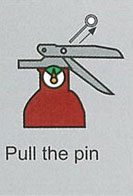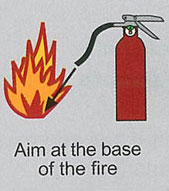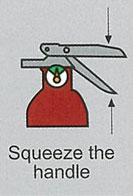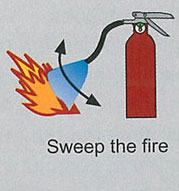Firefighting equipment
All Queensland regulated ships and boats over 5m in length must carry firefighting equipment that can extinguish a fire quickly and effectively.
You should buy all firefighting equipment, like fire blankets and extinguishers, from an authorised dealer who can work out the best type for your needs. Fire extinguishers must be serviced by the manufacturer or an authorised agent before the expiry dates.
If any firefighting equipment is unusable, you must replace it.
A portable fire extinguisher (PFE) which has a manufacture stamp of more than 5 years prior, under Australian Standards must be hydrostatic pressure tested by an approved tester. Due to the cost and time associated with this process most commonly the PFE would be simply replaced.

There are 6 fire extinguisher types found aboard boats that are suitable for different types of fire:
| Portable fire extinguisher guide | Water | Wet chemical(previously beige) | Foam (previously blue) | Dry chemical powder AB (E) B (E) |
Carbon dioxide (CO2) |
Vaporising liquid |
|---|---|---|---|---|---|---|
 |
 |
 |
 |
 |
 |
|
| A Ordinary combustibles most suitable (wood, paper, plastics and so on) |
Yes | Yes | Yes | Yes – AB(E) No – B(E) |
Limited | Yes |
| B Flammable and combustible liquids |
No | No | Yes | Yes | Limited | Limited |
| C Flammable gases |
No | No | No | Yes | Limited | Limited |
| (E) Fire involving energised electrical equipment |
No | No | No | Yes | Yes | Yes |
| F Fire involving cooking oils and fats |
No | Yes | Limited | No – AB(E) Limited – B(E) |
Limited effectiveness | No |
Portable extinguishers are used for quickly responding to fires before they spread too far. You must take precautions to minimise personal risks from heat radiation and smoke inhalation.
You should use portable extinguishers in the upright position and follow the PASS method:
P—Pull the pin.
A—Aim low at the base of the fire.
S—Squeeze the handle.
S—Sweep side to side.




Depending on the type and class of boat, other firefighting equipment like alarms, communication systems, fire pumps, hydrants and hoses may also be required.
Check the safety equipment for boats registered in Queensland for more information.

